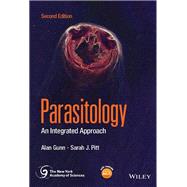Highly detailed textbook on parasites and parasite relationships
The fully revised edition of Parasitology: An Integrated Approach holds true to its engaging and easy-to-read approach. It comprehensively covers the complex and dynamic interaction between the parasite and its host ranging from invertebrates to vertebrates. Following an integrated approach, the authors explain how the study of parasites requires an understanding of biological concepts such as growth and reproduction, molecular biology, biochemistry, immunology, and pathology. In this second edition, they further address parasites and parasite relationships in the grand scheme of global changes and their impact.
This textbook also reviews the often-neglected positive aspects of parasite infections and how humans have used parasites for their own advantage.
Parasitology: An Integrated Approach, 2nd edition includes supplementary learning resources such as self-assessment quizzes, practical exercises, and an extensive collection of photographs.
- Now includes parasite life cycles in colour
- Strong focus on parasite interactions with other pathogens such as bacteria and viruses
- Discusses major advancements in the field of parasite diagnostics
- Additional image material and learning resources (quizzes, practical exercises) provided online
A valuable and comprehensive learning resource for undergraduate students in the biological, biomedical and veterinary sciences and in medicine. It is also of interest to postgraduates and professionals with an interest including but not limited to parasitology, animal welfare, ecology, and medical microbiology.








